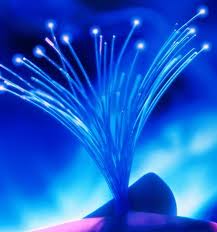The use of Fiber networks is increasing day by day and have a good future further. Get an idea about the Future of Fiber networks.
Wonder what our earlier generations did when there was no emergence of the internet. Well, quite obviously there were no lightning fast browsers, Facebook, uploads and downloads amounting to GBs and most importantly complex information sharing. Today dial-up is a forbidden name and broadband is well fast fading! Users allover are crying out loud in the name of high-speeds and with the introduction of Google’s gigabit broadband service it is all the more obvious that fiber optics is the way to be! www.netshop.co.uk caters to a wide range of fiber network solutions and services but before we get into details about netshop, let’s take a look at the future of fiber networks.
What is Fiber?
“Speed generated from light”. This apparently sounds quite complex but fiber is capable of broadcasting data/information in the form of pure light. The protocol of transmission remains the same i.e. point to point or end to end of the fiber optic cable where the information is deciphered.
 What’s the future?
What’s the future?
Coming to the most obvious question now. What is the future of fiber networks? One needs to understand the difference between the usual broadband and the pervasive hi-speed fiber network. The difference is quite simple really. Fiber networks will provide an upgrade channel from On-demand internet to uninterrupted ever-present connectivity which will only enrich user experience. Starting from domestic use to business and commercial transmission will be faster, hassle-free and uninterrupted!
Fiber networks don’t just boost the transmission speed it is also capable of adapting to new technological buildups. The only challenging task is to set up the fiber network. However, once set you can tweak it as and when necessary based on your requirements to better plan your capacity and deliverables. This would include end-point hardware infrastructure to managing electronic circuits more efficiently.
Some folks have concerns over the life of fiber network because of its exhaustive nature. To assure them, optical fiber’s core ingredient is glass, which has a longer life, better endurance capacity and tangible in nature. It can resist natural and physical stress to a considerable limit. Fiber optic has been an integral part of the success story of various emerging nations like Korea, Japan and Australia.
Fiber Networks result to minimum signal and transmission degradation and the “Grade of Service” or quality of transmission remains top notch. Due to this very nature more and more corporates are switching to fiber networks from their existing copper wire or overhead metal wired setups. If you didn’t already know, light decays at a much delayed rate than electricity. This is where Fiber networks score and proves beneficial for both consumers as well as internet providers. Providers can reach more target user base with a given resource and consumers enjoy un-interrupted service.
Organizations run on the accuracy and authenticity of data. As opposed to the conventional hard-wired transmission, data transmitted over fiber network will be far more accurate. As metal wires consume thrice the energy that it takes to throw a light signal from one point to the other. Upgrades from existing DSL model are easy and all It takes is a meticulous architectural planning for the optical fiber network.
It is no exaggeration to say that the future of fiber network is bright and it will only add value to organizations and users through its seamless, hassle-free data transmission.

